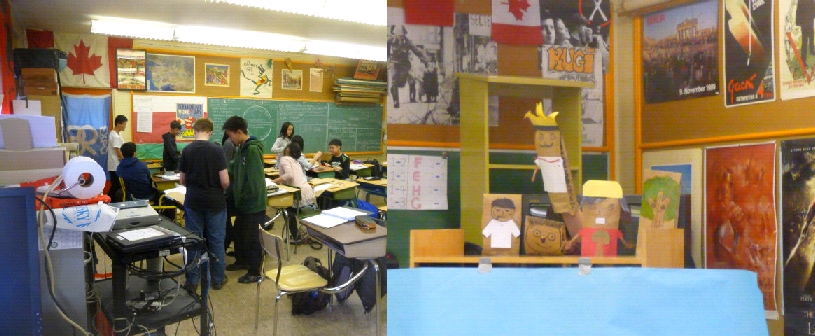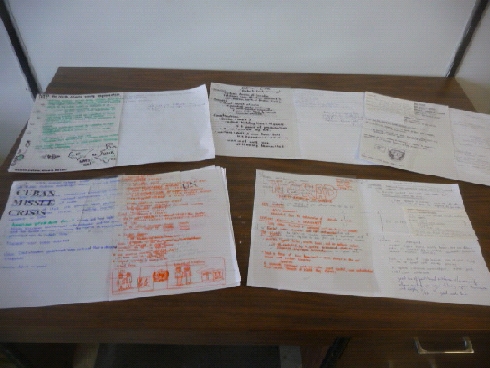 Artifact: “Teach-In” Ancient Chinese Philosophies
Artifact: “Teach-In” Ancient Chinese Philosophies
Reflection: This lesson, based upon the creation of puppets by students made from plain paper bags, was derived from the success of a grade 11 Social Studies class on Canada’s Post-War Prosperity. Students we asked to create a short, one minute play, on their pre-selected ancient Chinese philosophy. Research for this project was based on the curriculum text and internet study, with the requirement that characterization of the philosopher and content be based on primary and secondary evidence from the text book and internet. Students were exceedingly engaged in this project from the start; students had opportunity to let their imaginations go free with both the creation of the individual puppets as well as the play script. Assessment was based similar to the assessment strategies learned from the teaching of my grade 11 socials class — an initialized draft — and student peers and myself jointly grading presentations based upon a 12 point rubric that covered clarity of content and realism of form (presentation). This project was very well received by students and teacher peers; the concept was shared with other teachers, including the school’s two librarians who wished to see this type learning employed more often in socials as well as other disciplines.
________________________________________________________________
Artifact: “Teach-In” – Social Studies 11 Post-War Prosperity in Canada
Reflection: In this lesson I wanted to take learning further with students, readyig them for their year-end final exam; the concept of a teach-in (student driven lesson) was to make more concrete the definitions and functions of various institutions and their acronyms, such as the U.N. and W.T.O., touched upon in the curriculum. The vehicle of lesson delivery was the creation of student-group transparencies which defined and gave and outline of what the specific institution was in terms of its history and relevance, especially to Canada. The lesson exercise included a research component by each group, which was then transferred to a large project page as a draft; students initialized their research and draft contributions for assessment. Each talk was one minute in duration, with assessments done by both students observing the presentation and myself, everyone using a common rubric score based on six categories out of a total score of 24. All and all this approach to secondary instruction was highly successful, so much so that I used the same approach of ‘teach-in(s)’ for a grade 9 and grade 8 classes.

